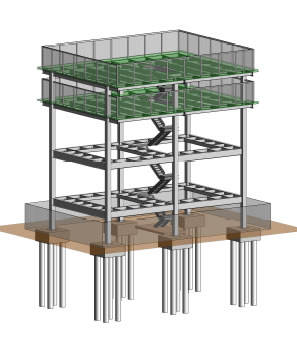The Ocean Shores City Council will be looking at applying for a Federal Emergency Management Agency (FEMA) grant to build at least one vertical evacuation structure to withstand the impact of a potential tsunami, now that the city and county have approved Hazard Mitigation Plans.
Council members were briefed on the recent meeting at the Ocean Shores Convention Center of planners, scientists and emergency management staff who met with the public about the potential for safe haven structures, how they could be designed and funded.
Councilman Jon Martin, who served as the local representative to speak at the forum, advocates moving forward with at least one structure for Ocean Shores.===
“It’s clear to me that if we don’t start moving toward at least getting one (shelter), we’ll never have two. We need to get a start,” Martin said.
Mayor Crystal Dingler also fully supports the effort.
“I think it’s important that we be knowledgeable and we be as prepared as we can,” said Dingler, referring to the group that also put on the Tsunami Road Show presentation earlier this past spring. “This is a group of people who know their stuff and they have learned from the events in Japan and other places around the world. We just need to pay attention to that.”
“I personally think vertical evacuation is the only option that we really have,” Dingler said.
Ocean Shores’ discussion came only a day before FEMA approved $2.2 million for the Shoalwater Bay Indian Tribe in Tokeland for construction of a vertical evacuation shelter for protecting the population from tsunamis. That amount represents 90 percent of the federal share of the total project cost of about $2.5 million.
Dingler pointed to the Ocosta Elementary School in Westport that was the first local effort in Grays Harbor County to build a vertical evacuation structure: “The Ocosta School had it right. You save the children first, and we need to think about these things.”
The city’s recent completion of its Hazard Mitigation Plan, along with the adoption of a county-wide plan, means Ocean Shores is now able to apply for funding that might not be available otherwise.
Dingler said she intends to bring the final Hazard Mitigation Plan back to the council on July 9 for approval.
“I’m told this is a good time to get it approved because we can start going after FEMA grants, and there are a variety of them,” Dingler said. “… I think there is a real opportunity for us to look at vertical evacuation over the next few months and really start making real plans.”
Martin said he learned from the meetings and forums that the Hazard Mitigation Plan “is the key to everything. That puts us much further ahead.” He suggested the city revisit the idea of building one vertical evacuation structure at the city’s Public Works facility because it’s close to Ocean Shores Elementary School and a central location on the peninsula. Martin voted against one earlier proposal in 2017 in for just such a structure as part of a larger Public Works project for a collection system building, because at the time it was deemed to be too expensive.
“After I learned that we could actually get grants for just the tsunami part of it, the costs the city would be dramatically reduced,” Martin said. A collection system building with a vertical evacuation shelter was estimated to cost $2.45 million, while the same building without the tsunami shelter was $1.04 million.
Martin suggested the city should review all the potential sites for vertical evacuation possibilities.
Martin was also on hand as a handful of residents met June 26 at the Ocean Shores Public Library to take the first steps toward forming a citizens committee in support of any local tsunami structure efforts.
That meeting was put together by Lori Hardin, a five-year resident who recently started a Facebook group, “Concerned Citizens Action Coalition/Ocean Shores.” She said such a committee should meet with the mayor, with Grays Harbor County Emergency Management Deputy Director Chuck Wallace and with the Safe Haven people, to learn specifics on existing tsunami safety concepts and funding sources, and ways citizen support can be used to advance the goal.
The next step, Hardin said, would be “to get partnered with the city right away.” Hardin noted one of the committee’s purposes is to foster “citizen involvement in figuring out solutions. We have to be able to come up with the solutions we want to see.” Ideas mentioned Tuesday included building code changes, modifications to existing structures, and public-private partnerships to add tsunami safety elements to future commercial structures.
The group plans to meet again at 6:30 p.m. Tuesday, July 10, in the Library meeting room. Hardin and the group can be contacted via the Facebook page and by email at ccitizensactioncoalition@gmail.com.



